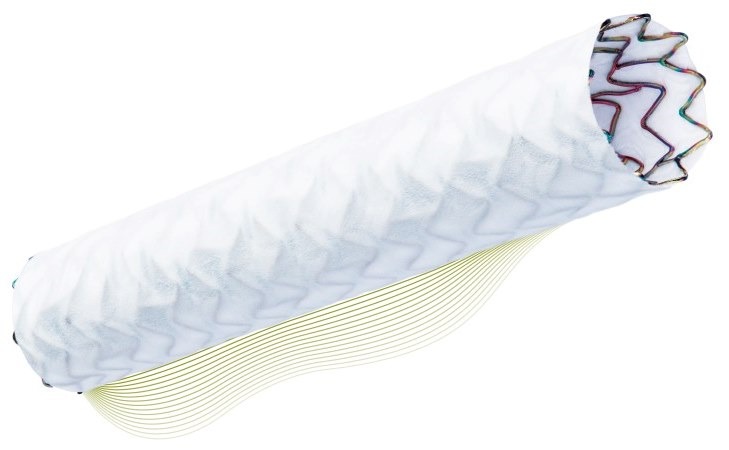Biotronik today announced the United States (US) commercial launch of the PK Papyrus covered coronary stent system for use in the emergency treatment of acute coronary perforations.

Image: Biotronik’s PK Papyrus coronary stent. Photo: Courtesy of Biotronik.
More than 800,000 percutaneous coronary intervention procedures are performed annually in the US3 and fewer than 8,000 require a covered stent, classifying PK Papyrus as a Humanitarian Use Device. The ultrathin strut, single-stent design and unique electrospun polyurethane membrane expands treatment options and is designed to reduce the high rate of adverse outcomes associated with coronary artery perforations.
“The availability of PK Papyrus marks a long-overdue advancement in the field of interventional cardiology,” said Ryan Walters, President of Biotronik , Inc. “Clinicians can now rely on a low-profile covered stent during critical cardiac emergencies. In situations where every second counts, physicians can trust PK Papyrus to deliver quickly. Biotronik ’s covered stent is designed to save more lives and to help avoid emergency bypass surgeries, which come with increased risk for patients and can be costly for hospitals. This is innovation that matters for hospital administrators, physicians and their patients, who deserve the best outcomes.”
PK Papyrus is the first FDA-approved device for the treatment of acute coronary artery perforations in nearly two decades. It is available in 17 sizes and is the only 5 French compatible4 covered coronary stent on the US market. Biotronik’s covered stent is 58 percent more flexible,5 and has a 23 percent smaller crossing profile compared to Graftmaster,6 which has a layered dual-stent design and is the only other covered coronary stent available in the US.
Following the February 2019 approval and availability of Orsiro, the only FDA-approved ultrathin strut drug-eluting stent, the launch of PK Papyrus further strengthens biotronik’s vascular intervention portfolio in the US. PK Papyrus received CE mark in 2013 and was approved for use by the FDA in late 2018.
Source: Company Press Release
